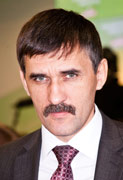  
| |||
|
| Current issue About edition Editorial board To authors Subscription Our authors Files |
|
September 2025, № 3 (247), pages 84-94doi: 10.25198/1814-6457-247-84Dyrdina E.V. 1. Mashkin A.L., Borisov V.M. and Borisov Yu.V. (2023) Some issues of developing electronic learning courses in mechanics. Pedagogy, psychology, society: from theory to practice: materials of the II All-Russian scientific and practical conference with international participation. Cheboksary, P. 76-79. EDN NTNKW 2. Muschanov V.F. and Fomenko S.A. (2022) On the methodology of teaching theoretical mechanics in a civil engineering university. Technical operation of water transport: problems and ways of development, No. V. URL: https://cyberleninka.ru/article/n/o-metodike-prepodavaniya-teoreticheskoy-mehaniki-v-stroitelnom-vuze (accessed: 25.06.2025). 3. Ponomareva Ye.V., Khokhlova O.A., Kulemina K.V. and Sinelshchikov A.V. (2022) Development of theoretical and methodological approaches in the study of theoretical mechanics by students of civil engineering. Engineering and construction bulletin of the Caspian region: scientific and technical journal. Astrakhan State University of Architecture and Civil Engineering. Astrakhan: GAOU AO VO "AGASU", No. 4 (42), pp. 46-54. 4. X. Lei (2021) A Study on the Practice and Experience of Teaching Theoretical Mechanics Based on MOOC. 2nd International Conference on Artificial Intelligence and Education (ICAIE), Dali, China, 2021, pp. 380-383, doi: 10.1109/ICAIE53562.2021.00086. 5. Zhifang Tian (2021) A New Teaching Model of Structural Mechanics Course for Civil Engineering Students in the Information Age. ICISCAE 2021: The 4th International Conference on Information Systems and Computer Education. Yunyang University of Technology and Business, China, pp. 1486-1490. 6. Dyrdina E.V. (2024) Blended learning model in teaching mechanics to future architects. Vestnik of the Orenburg State University, No. 3 (243), pp. 93-102, 10 p. 7. Belonovskaya I.D., Petrova S.D. and Kuznetsov V.V. (2023) Heuristic approaches to solving mechanical engineering problems by future technologists and designers. Vestnik of the Orenburg State University, No. 2 (238), pp. 71-77. DOI 10.25198/1814-6457-238-71. EDN KPRCIS. 8. Khandrimailov A.A., Belonovskaya I.D., Vorobyov V.K. and Zhuravleva M.O. (2023) Research of organizational and technological risks and resources for activating the project activities of a future engineer. Vestnik of the Orenburg State University, No. 2(238), pp. 115-120. DOI 10.25198/1814-6457-238-115. EDN MSXLGQ. 9. Miroshnikov S.A. and Sazonova T.V. (2024) Proactive integration of professional education, industry and business (experience of Orenburg State University). Vestnik of the Orenburg State University, No. 4 (244), pp. 105-114. DOI 10.25198 / 1814-6457-244-105. EDN PILPLP. 10. Goryainova T.A. and Belonovskaya I.D. (2020) Study of predictive skills of future engineers using content analysis. Vestnik of the Orenburg State University. No. 5 (228), pp. 99-106. DOI 10.25198/1814-6457-228-99. EDN CWKXVX. 11. Likholetov V.V. (2021) Ideal case: search for effective didactic means of systematic training of future engineers. Engineering education, Issue. 30, Pp. 7–25. 12. Rozhik A.Yu. (2017) Historical stages of solving the problem of forming engineering thinking. Bulletin of SUSU. Series “Education. Pedagogical Sciences”, Vol. 9, No. 2, Pp. 98–113. DOI: 10.14529/ped170210 13. Dyrdina E.V. (2024) Competence-oriented approach in teaching mechanics to students of architectural training programs. In A.V. Zaitsev (ed.) University complex as a regional center of education, science and culture: collection of materials of the All-Russian scientific-methodical conf., Orenburg, February 1-3, 2024. Orenburg: OSU, pp. 3025-3036. 14. Poyarkova E.V. and Dyrdina E.V. Using interactive engineering models to develop key skills. University complex as a regional center of education, science and culture: collection of materials of the All-Russian scientific and methodological conference, Orenburg, January 26-27, 2023. Orenburg: Orenburg State University, pp. 726-732. EDN LSQKLR. 15. Dyrdina E.V. (2025) Course mapping: a powerful tool for reflection and knowledge acquisition. University complex as a regional center of education, science and culture: materials of the All-Russian scientific and methodological conf., dedicated to the 70th anniversary of Orenburg State University, Orenburg, January 30. – 1 Febr. 2025. Orenburg : OSU, pp. 75-85. 16. Baxter S. C., Johnson A. and Fralick B.S. (2015, June) Revisiting Graphical Statics. 2015 ASEE Annual Conference & Exposition. Seattle, Washington. 10.18260/p.24681 17. Martin Pospнљil*, Markйta Vavruљkovб, Eva Veřtбtovб (2015) New Ways of Teaching Statics and Applied Structural Mechanics to Architects. Applied Mechanics and Materials, Vol. 732, pp. 417-420 18. The methods of graphical statics and their relation to the structural form (2003) Proceedings of the First International Congress on Construction History, Madrid, 20th-24th January 2003, ed. S. Huerta, Madrid: I. Juan de Herrera, SEdHC, ETSAM, A. E. Benvenuto, COAM, F. Dragados, 2003. 19. Muttoni A. (2012) L’art des structures: Une introduction au fonctionnement des structures en architecture. 2nd edition. PU POLYTECHNIQU, 2012, 270 p. 20. Saliklis E. (2019) Structures: A Geometric Approach. Graphical Statics and Analysis. Springer International Publishing, 336 p. 21. Dyrdina E.V. (2023) Fundamentals of statics of structures: theoretical and structural mechanics for architects: a textbook: in 2 volumes. Volume I.Orenburg State University. Orenburg: OSU, 359 p. About this articleAuthor: Dyrdina E.V.Year: 2025 doi: 10.25198/1814-6457-247-84 |
|
||||||||||||
| Current issue About edition Editorial board To authors Subscription Our authors Files |
|
© Электронное периодическое издание: ВЕСТНИК ОГУ on-line (VESTNIK OSU on-line), ISSN on-line 1814-6465 Зарегистрировано в Федеральной службе по надзору в сфере связи, информационных технологий и массовых коммуникаций Свидетельство о регистрации СМИ: Эл № ФС77-37678 от 29 сентября 2009 г. Учредитель: Оренбургский государственный университет (ОГУ) Главный редактор: С.А. Мирошников Адрес редакции: 460018, г. Оренбург, проспект Победы, д. 13, к. 2335 Тел./факс: (3532)37-27-78 E-mail: vestnik@mail.osu.ru |
1999–2025 © CIT OSU |















